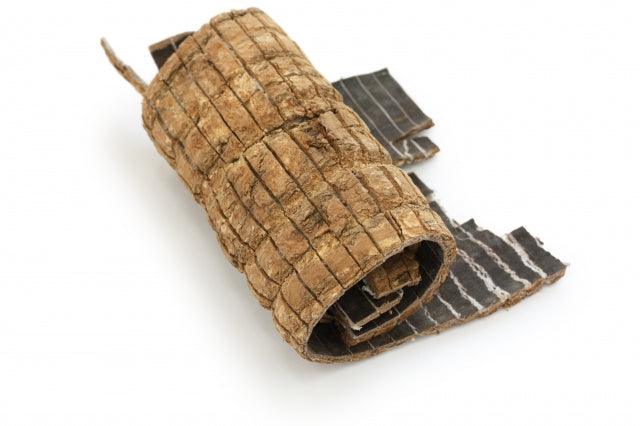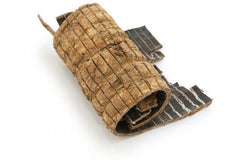

Du Zhong (Eucommia Bark) 4oz
- $5.99
$6.99- $5.99
- Unit price
- per
30 Day Money-Back Guarantee
Free Shipping & Return
Free standard shipping on orders over $50
Express 1 day delivery offered
Couldn't load pickup availability
Proposition 65 Warning
Description
x| Pharmaceutical Name: | Cortex Eucommiae |
| Botanical Name: | Eucommia ulmoides oliv. |
| Common Name: | Erythrina bark, Coralbean bark |
| Source of Earliest Record: | Shennong Bencao Jing |
| art Used & Method for Pharmaceutical Preparations: | The bark is gathered in summer and autumn. The rough bark is removed and discarded, and then the smooth bark is dried in the sun. |
| Properties and Taste: | Sweet and warm |
| Meridian: | Liver and kidney |
| Functions: | To tonify liver and kidneys and strengthen bones and tendons To calm the fetus to prevent miscarriage |
| Indications and Combinations: | 1. Deficiency of liver and kidneys manifested as soreness and pain in the lower back and knees. *Use with Psoralea fruit (Buguzhi) and Walnut seed (Hutaoren). 2. Impotence due to deficient kidneys. *Use with Dogwood fruit (Shanzhuyu), Dadder seed (Tusizi) and Schisandra fruit (Wuweizi). 3. Threatened abortion or restlessness of fetus manifested as lower abdominal pain and uterine bleeding. *Use with Teasel root (Xuduan) and Dioscorea (Shanyao). |
| Dosage: | 10-15 g |
| Cautions: | The fried herb is more effective than the raw herb. Eucommia bark (Duzhong) is contraindicated in cases with deficiency of yin with excessive fire. |
FQ&A
x| Processing Time | 95% orders will be processed in 1-2 business days. You may add tips for rushing orders. |
| Delivery Time | 1-5 business days(US). You can choose options in check out |
| Payment | Credit Cards, Paypal, Zelle, Alipay, Wechat. Contact us for more payment info. |
| VIP Program | Click here to know our exclusive benefits for member only |
| How to buy | Click here to check the instructions |
| More Questions | Click here to contact our 24/7 customer support |
Disclaimers
xWhile we do our best to ensure the product information is correct, on occasion manufacturers may alter the actual product packaging and ingredients lists. Thus, it may contain more and/or different information than that is shown on our Web site. The content on this site is only for reference purposes and is not intended to substitute for professional medical advice or treatment given by licensed health-care professionals. We highly recommend that you do not solely rely on the information shown on our Web site and always consult with a physician, pharmacist, or other licensed health-care professionals regarding the labels, warnings, directions, and any inquiries before using or consuming the actual product. You should not use this information as self-diagnosis or for treating a health problem or disease. For more information, please contact the manufacturer. These statements have not been evaluated by the Food and Drug Administration. The information on this website is not intended to diagnose, treat, cure or prevent any disease. Contact your healthcare professional immediately should you have any health related questions or suspect any medical problems or discomfort. Never disregard or delay medical advice based upon information you may have read on our Web site. Product packaging, specifications and price are subject to change without notice. All information about the products on our website is provided for information purposes only. Please always read labels, warnings and directions provided with the product before use.
Shipping & Return
xShipping Policy
Click here to check full shipping policyReturns Policy
Click here to check full return & refund policyRelated Products
- $5.99
$6.99- $5.99
- Unit price
- per
- $5.99
$6.99- $5.99
- Unit price
- per
- $5.99
$6.99- $5.99
- Unit price
- per
- $5.99
$6.99- $5.99
- Unit price
- per
- $5.99
$6.99- $5.99
- Unit price
- per
- $5.99
$6.99- $5.99
- Unit price
- per
- $5.99
$6.99- $5.99
- Unit price
- per
- $5.99
$6.99- $5.99
- Unit price
- per
- $5.99
$6.99- $5.99
- Unit price
- per
- $5.99
$6.99- $5.99
- Unit price
- per
Recently Viewed Products
- $5.99
$6.99- $5.99
- Unit price
- per
- $5.99
$6.99- $5.99
- Unit price
- per
- $5.99
$6.99- $5.99
- Unit price
- per
- $5.99
$6.99- $5.99
- Unit price
- per
- $5.99
$6.99- $5.99
- Unit price
- per
- $5.99
$6.99- $5.99
- Unit price
- per
- $5.99
$6.99- $5.99
- Unit price
- per
- $5.99
$6.99- $5.99
- Unit price
- per
- $5.99
$6.99- $5.99
- Unit price
- per
- $5.99
$6.99- $5.99
- Unit price
- per
- Choosing a selection results in a full page refresh.

